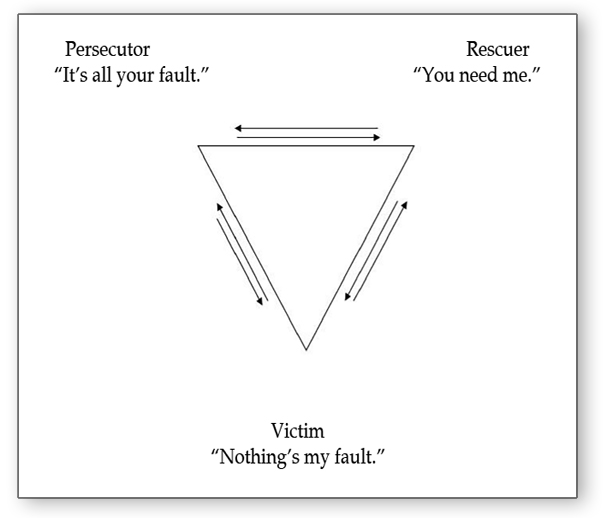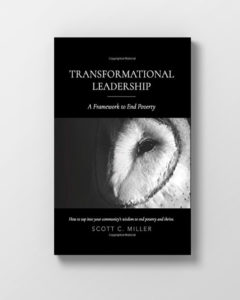The call to adventure to address poverty typically comes in one of these four ways:
-
- Provide private, limited charity to deserving, needy people as prescribed by my faith.
- Mentor someone poor who wants to learn how to not be poor anymore.
- Directly hire the poor.
- Support any policy that would eliminate subsidies that ultimately enable the poor to stay poor.
What’s wrong with solution No. 1: Provide private, limited charity to the deserving poor?
Nothing is wrong with charity per se. Expecting that it will solve the long-term problem of someone experiencing poverty is the problem. The major issue with charity is that most people expect it to solve the underlying problem, which typically backfires because of a dynamic identified by Dr. Stephen Karpman as the “Drama Triangle.” My first job in the “anti-poverty” field was to meet with up to 40 people a week who were coming in asking for handout of $50 to $100. In 15-minute interviews, it was impossible to discern whether the financial assistance would help or hinder in the long run. Furthermore, I had no place to refer people so they could address the underlying reasons for being in poverty. It was this experience with charity that eventually led me to the development of Circles USA.
When the call is that of charity, we are compelled to see someone as a “deserving victim” who can be rescued, at least in this moment, with a quick fix of some sort. We do not engage with the complexity of the situation, instead prescribing the fix(es): Let me give you some food, a check, gasoline, or a referral to someone else who can help some more. I might be involved with a program that can help you get a job, repair your car, be a better planner, manage your budget, etc. Our unwillingness and often inability to acknowledge that poverty is complex for both internal and external reasons leads us down a path of disillusionment when our help doesn’t seem to add up to a long-term result. We might begin to harbor feelings of resentment toward the person who refused to be fixed through our “wise counsel” and best intentions.

Persecutor: Appears controlling, critical, angry, authoritative, rigid, and superior.
Rescuer: Needs to be needed. Enables others to remain dependent and gives them permission to fail; rescuing helps rescuers avoid facing their own issues.
Victim: Appears oppressed, helpless, powerless, ashamed—finding it difficult to make decisions or solve problems.
The Drama Triangle addresses individuals’ perceptions as they shift back and forth between roles. The drama persists when it fulfills some unmet need for individuals to continue in conflict in lieu of addressing the real issues, identifying solutions, and taking action.
Books such as Toxic Charity and When Helping Hurts have become popular study group material in faith communities as they examine their own experiences on the Drama Triangle. Circles USA is attractive to faith communities because they see it as a structured and safe program through which to build long-term relationships of mutual respect that begin to address the underlying problems of poverty. We call the participants in Circles USA who are working their way out of poverty Circle Leaders in order to reinforce the idea that they will make their own plans to move out of poverty and tell others how they would like to be supported. It puts the rescuer impulse on its head.
Follow-up posts will walk through common responses to poverty 2, 3, and 4…stay tuned for more.
Learn more: Transformational Leadership: A Framework to End Poverty ~ By Scott C. Miller
To learn more about Scott Miller, please see his website here.

